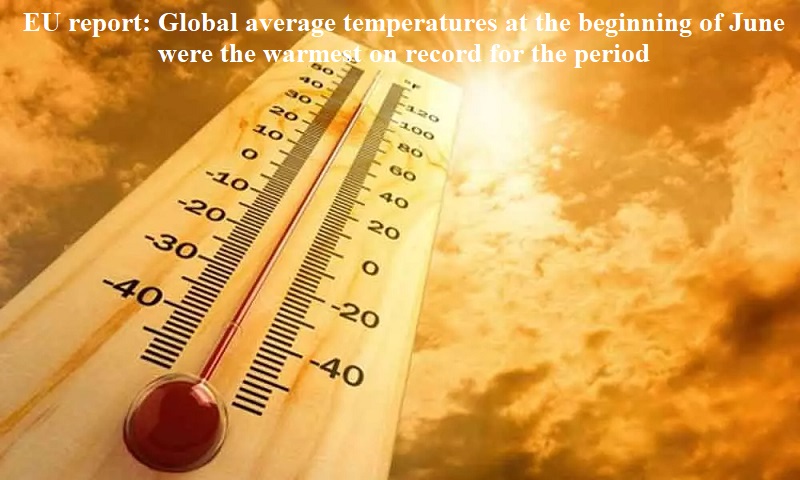
Preliminary data from the European Union’s climate monitoring unit on Thursday (June 15) revealed that global average temperatures recorded at the beginning of June were the highest ever recorded for that time period. This coincides with recent warnings from scientists at the United States National Oceanic and Atmospheric Administration (NOAA) about the potential impact of an anticipated El Niño climate phenomenon, which could lead to extreme weather events and temperature records.
According to a report by Copernicus, the EU’s observation agency, the first week of June this year experienced a “remarkable global warmth.” Data from ERA5 indicated that temperatures during the initial days of the month surpassed pre-industrial levels by as much as 1.5 degrees Celsius, potentially marking the first time such high temperatures have been observed in the industrial era. The report stated that global-mean surface air temperatures during the early days of June 2023 were the highest in the ERA5 data record for that period, dating back to 1950. Additionally, temperatures recorded in early June were nearly one degree Celsius higher than those recorded for the same month in 1979.
Samantha Burgess, Deputy Director of Copernicus Climate Change Service (C3S), highlighted the significance of monitoring climate conditions to understand the frequency and duration of global temperatures exceeding 1.5 degrees Celsius. She emphasized the importance of every fraction of a degree in mitigating the severe consequences of the climate crisis.
In a separate development, NOAA announced last week that El Niño conditions are present and expected to gradually strengthen until early 2024. El Niño refers to above-average sea surface temperatures in the eastern and central Pacific Ocean near the equator. Michael Mann, a climate scientist at the University of Pennsylvania, stated that the global surface temperature anomaly is currently at or near record levels, with 2023 likely to be the warmest year on record. He attributed this trend to ongoing fossil fuel burning and carbon pollution.
NOAA’s update on Wednesday revealed that May 2023 was the third-warmest May on record in the world, based on a temperature record spanning 174 years. NOAA climate scientist Ellen Bartow-Gillies cautioned that while June temperature data is yet to be processed, indications suggest that temperatures may continue to rise. The impact of El Niño could further contribute to warmer conditions.
Overall, these reports highlight the concerning trend of increasing global temperatures and the urgent need to address the climate crisis.

Post Your Comments